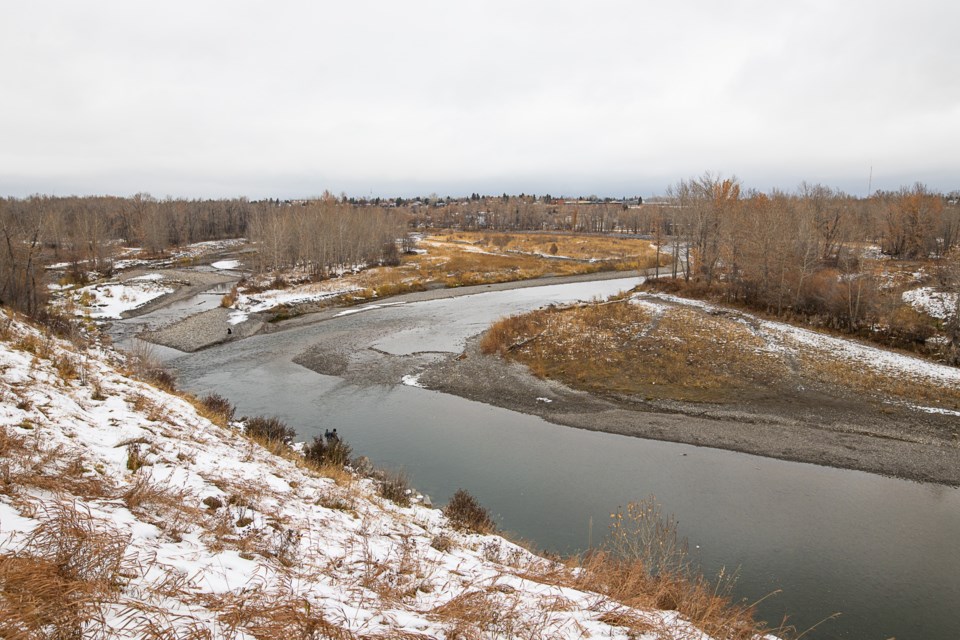Natural assets within Okotoks borders are being assigned a value based on the benefits and services they provide to the Town and its residents.
With third-party help from Fiera Biological Consulting, the Town of Okotoks underwent a natural and naturalized asset inventory in 2019 and 2020, which was intended to document the natural assets in the community and assess the benefits they provide in terms of ecosystem services such as slowing overland flooding.
“We’re actually capturing, which is not often done, the true environmental, social and economic costs of both losing and preserving a natural asset during land development,” said Shari Young, Okotoks climate change and energy specialist.
Okotoks is the first municipality in Alberta to undertake a comprehensive ecosystem service evaluation, documenting and mapping natural assets and calculating their value, she said.
Those assets include everything from pasture land recently acquired in the 2017 annexation to the Sheep River valley region, but exclude private residences and large paved areas.
“The majority of semi-natural areas is those new pasture lands and the hay lands that came across as part of the annexed areas,” said Young. “While those are slated for urban development as the Town grows, they currently offer a fair amount of ecosystem services to the town.”
The natural assets compiled have been worked into the Town’s overall asset management system, but rather than being assigned a replacement value, like traditional assets, they are given a value based on the services they provide, she said.
In total, the natural and semi-natural asset services are valued at $84 million, said Young.
“These include waterflow regulation, climate regulation, recreational assets, as well as wetland services, water quality control and soil erosion,” she said.
Water quality and quantity are affected by natural assts as they can influence the impacts of flooding by interception, retaining and slowing the flow of precipitation and stormwater run-off, she said.
Each urban tree as been equated to $12.2 per year in water run-off protection due the ability to slow run-off, which is how value was calculated.
For heavily trees areas and woodlands, $61,800 per hectare was assigned as the value, and areas of lower vegetation like pastures and natural vegetation were given a value of $27,000 per hectare.
Recreation assets and attractiveness of natural areas was valued at $13.1 million, which Young said was based on a willingness-to-pay model done in a study by the City of Saskatoon. The model suggests residents would be willing to pay $1,500 per household to access opportunities for walking, biking, picknicking, bird-watching and other activities in areas like the river valley.
“I would argue if we asked them (Okotokians) this year during COVID, the might value it a bit higher,” said Young.
Wetlands were valued at about $30,000 per hectare for their stormwater mitigation, climate regulation, water flow control and soil erosion prevention, she said.
Moving forward, the Town will develop a number of policies to ensure its natural assets are protected and maintained, she said. These include a conservation policy for planning, a tree protection bylaw currently being developed by the parks department, and potentially working out funding tools like a natural lands acquisition fund.
Young said having policies in place and being aware of the value of its natural assets will help the Town make informed decisions when considering planning applications.
“We can better understand the economic and environmental trade-offs of land development, which makes for better decision-making,” said Young.
Mayor Bill Robertson said he appreciated the inventory being completed, adding it justifies some of the policies council has been following for the past few years.
“We have a policy of purchasing river valley lands when they come available, and evaluating them on the basis of their value as a natural asset I would think would give more credibility to our policy, as opposed to just buying something because it’s nice to have,” said Robertson.
“This report gives us further rationale for doing many of the things that we think are wise to do at this time.”




